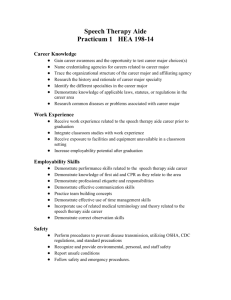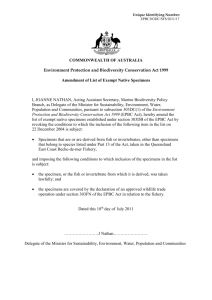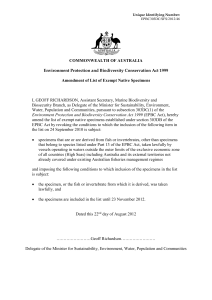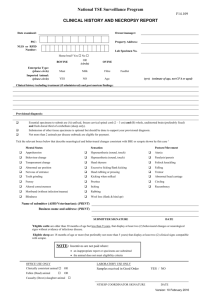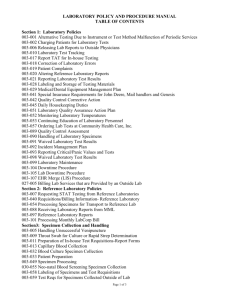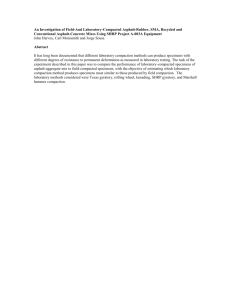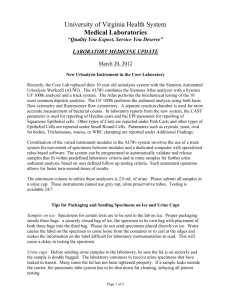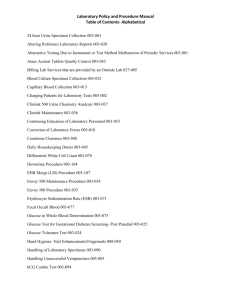Phlebotomy
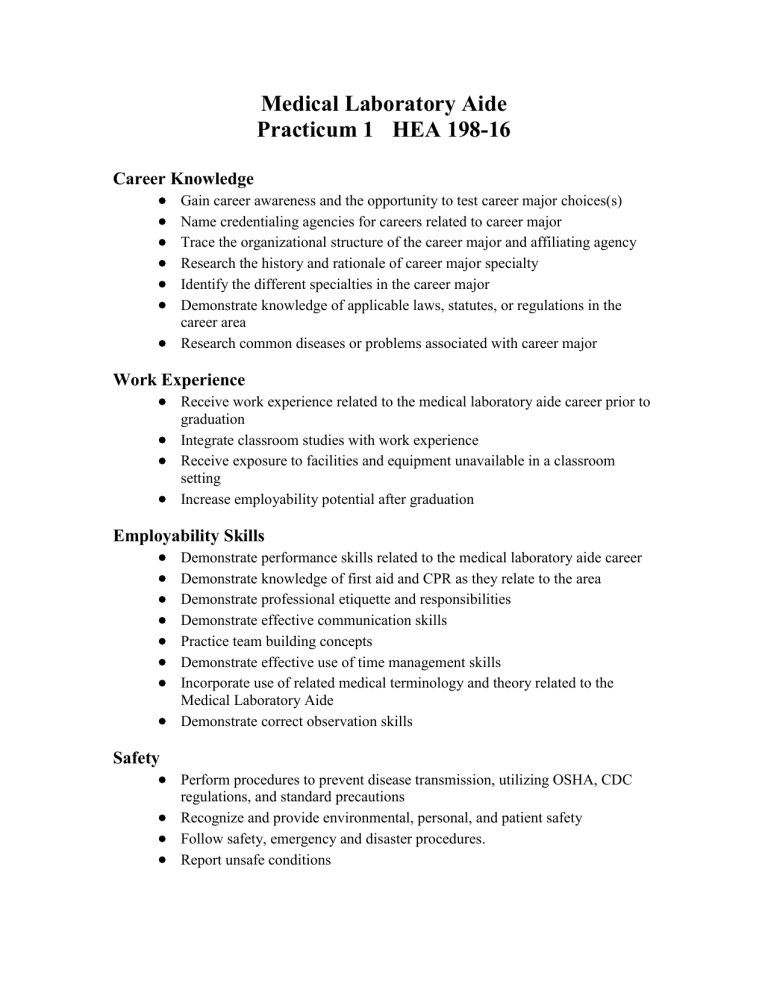
Medical Laboratory Aide
Practicum 1 HEA 198-16
Career Knowledge
Gain career awareness and the opportunity to test career major choices(s)
Name credentialing agencies for careers related to career major
Trace the organizational structure of the career major and affiliating agency
Research the history and rationale of career major specialty
Identify the different specialties in the career major
Demonstrate knowledge of applicable laws, statutes, or regulations in the career area
Research common diseases or problems associated with career major
Work Experience
Receive work experience related to the medical laboratory aide career prior to graduation
Integrate classroom studies with work experience
Receive exposure to facilities and equipment unavailable in a classroom setting
Increase employability potential after graduation
Employability Skills
Demonstrate performance skills related to the medical laboratory aide career
Demonstrate knowledge of first aid and CPR as they relate to the area
Demonstrate professional etiquette and responsibilities
Demonstrate effective communication skills
Practice team building concepts
Demonstrate effective use of time management skills
Incorporate use of related medical terminology and theory related to the
Medical Laboratory Aide
Demonstrate correct observation skills
Safety
Perform procedures to prevent disease transmission, utilizing OSHA, CDC regulations, and standard precautions
Recognize and provide environmental, personal, and patient safety
Follow safety, emergency and disaster procedures.
Report unsafe conditions
Specific Career Related Tasks
Office Procedures
Maintain confidentiality of patient and facility information
Demonstrate proper use of the telephone, intercom system, copying, and faxing
Receive patients and visitors
Observe, record and report patient data
Prepare accident, and incident reports as necessary
Assist with data entry and billing procedures
Treatment Procedures
Identify supplies and equipment commonly used in lab procedures
Assist with quality control checks of equipment
Log incoming and outgoing specimens
Deliver supplies and lab specimens to designated areas
Prepare specimens for shipment
Maintain lab work surfaces and glassware using proper cleaning and safety procedures
Use appropriate sterilization procedures
Distribute supplies to appropriate laboratory section
Maintain inventory
Maintain routine lab chemical solutions. Label and store properly
Prepare urine for microscopic examination
Prepare and distribute 24 hour urine collection containers
Differentiate between various kinds of collection tubes and anticoagulants
Identify normal lab values for blood and urine
Name the components of a complete blood count (CBC)
Collect fluid or tissue specimens. Explain collection procedures to patients
Match laboratory requisition forms to specimen tubes
Document route of specimens from collection to laboratory analysis and diagnosis
Collect fluid or tissue samples, using appropriate collection procedures
Assist and draw blood from capillaries by dermal puncture, such as heel or finger stick methods
Assist and draw blood from veins by vacuum tube, syringe, or butterfly venipuncture methods
Assist and draw blood from arteries, using arterial collection techniques
Dispose of contaminated sharps, in accordance with applicable laws, standards, and policies
Dispose of blood or other biohazard fluids or tissues, in accordance with applicable laws, standards, and policies
Identify potential hazards in the lab
Obtain a copy of MSDS sheets for materials used in the lab
Explain the use of the safety shower and safety apparel
Demonstrate procedure for use of the eyewash station
Organize and clean blood-drawing trays, ensuring that all instruments are sterile and all needles, syringes or related items are of first-time use
